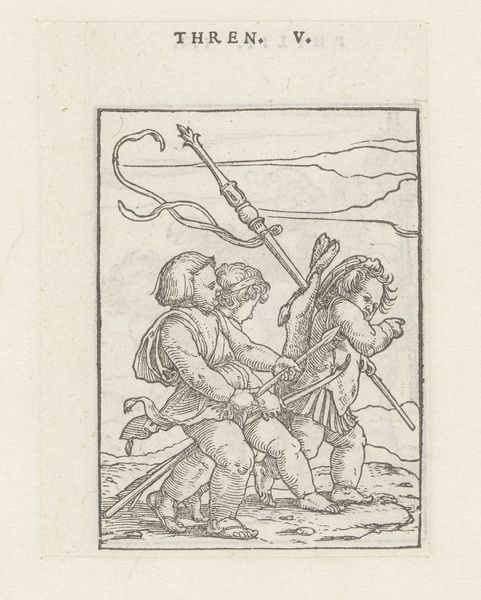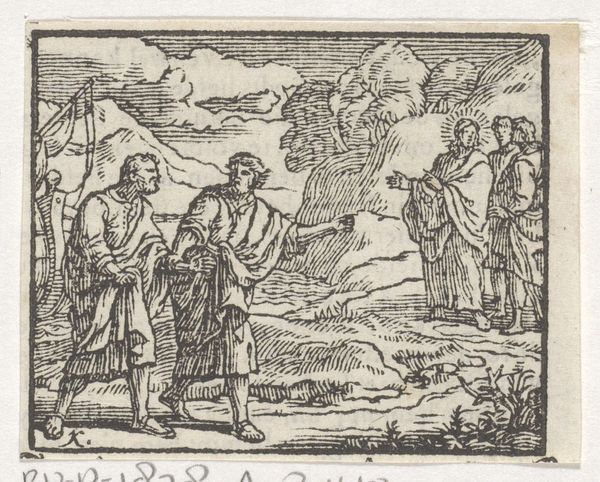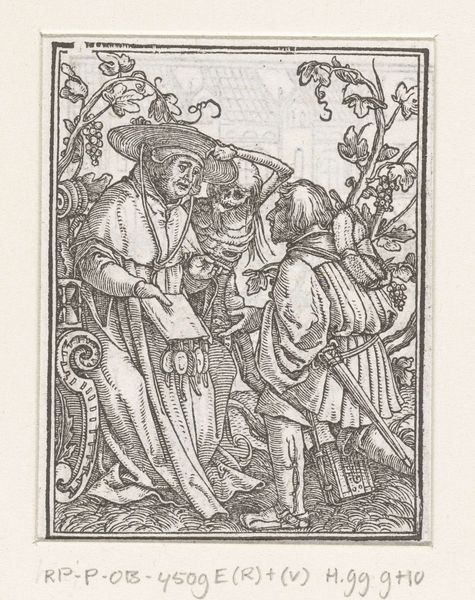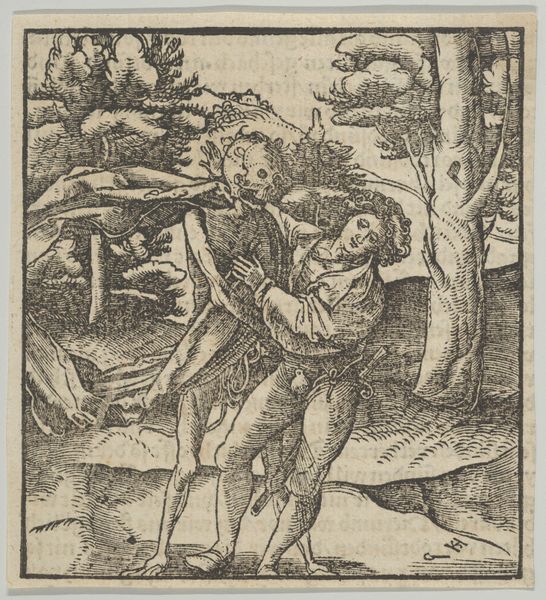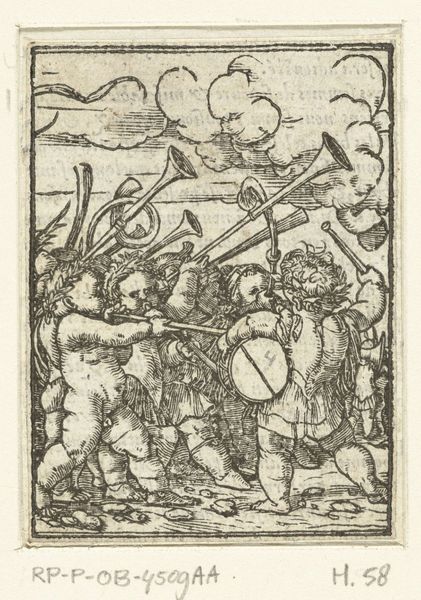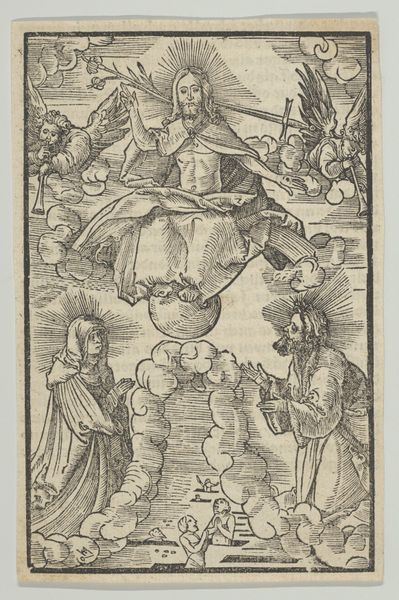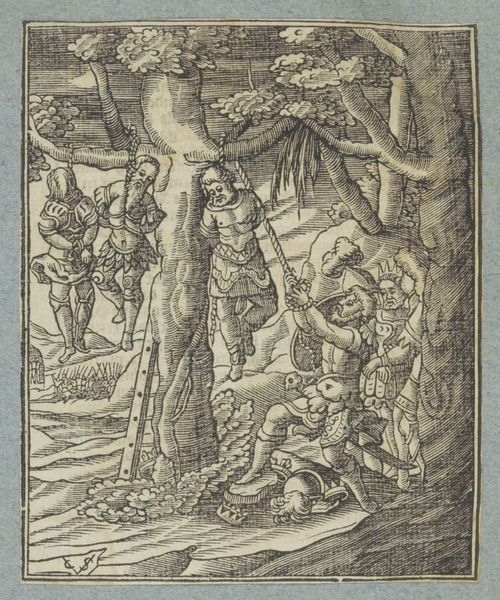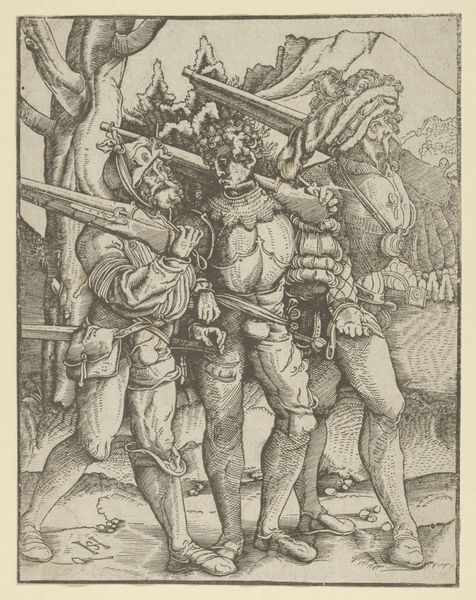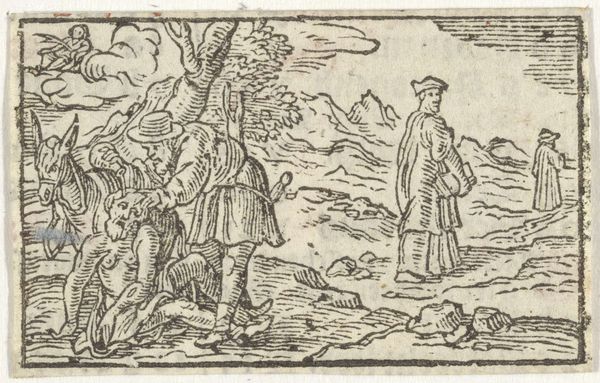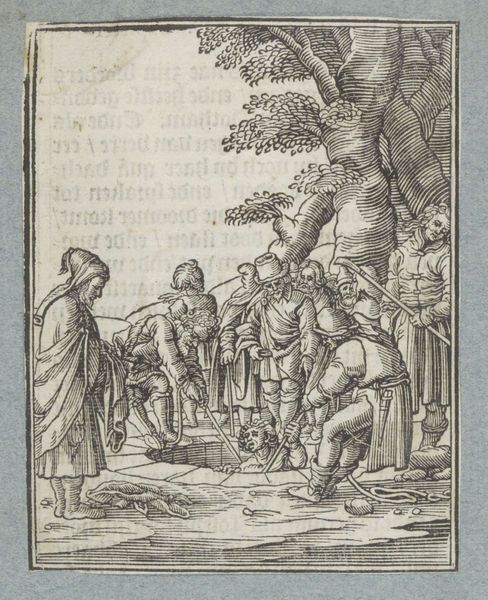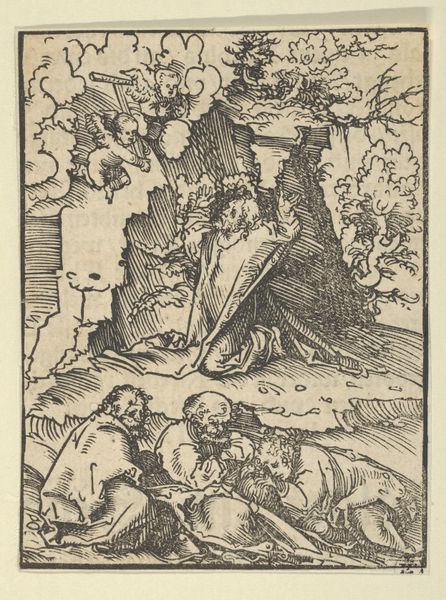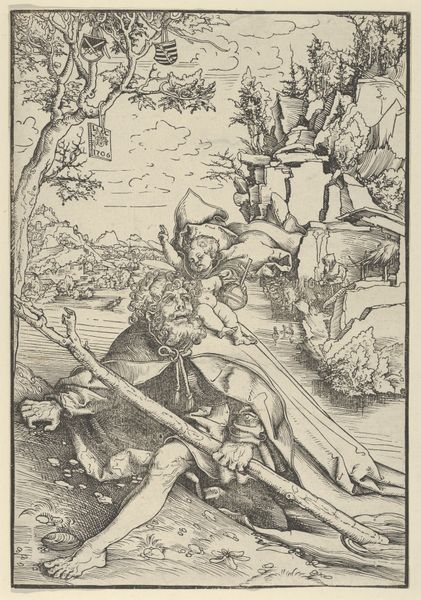
print, engraving
# print
#
pen sketch
#
figuration
#
child
#
northern-renaissance
#
engraving
Dimensions: height 65 mm, width 50 mm
Copyright: Rijks Museum: Open Domain
Editor: This print, "Three Children with Trophy" by Hans Holbein the Younger, made in 1547, features delicate engraving. There’s something quite peculiar about the imagery—children amidst symbols of war and triumph. What social commentary might Holbein be offering us here? Curator: Indeed. Holbein worked in a world saturated with political and religious tensions. Considering that he created art for powerful figures, we might interpret these children embodying the legacy—or perhaps even the burden—of political ambition. The trophy, a classical suit of armour, seems far too large for them. Editor: So, these symbols aren't necessarily celebrating military victory? Curator: Not necessarily. In this print, Holbein subverts the conventions of triumphal imagery by placing children at the center. Is it meant to humanize conflict or to underscore its absurdity when passed down to future generations? What message would you imagine viewers at the time receiving, knowing full well the bloody history and present tensions of the period? Editor: I see what you mean! Perhaps viewers would question the true cost of conflict, and wonder who actually benefits. Placing children at the fore encourages such contemplation. Curator: Exactly. The image forces us to confront the socio-political climate of the 16th century. Art rarely exists in a vacuum. Editor: I now have a greater understanding of the layers of cultural and political significance embedded in what first seemed like a quaint, historical piece. Thanks for pointing that out. Curator: The role of art is always interwoven with social history, if you only know how to look at it.
Comments
No comments
Be the first to comment and join the conversation on the ultimate creative platform.
